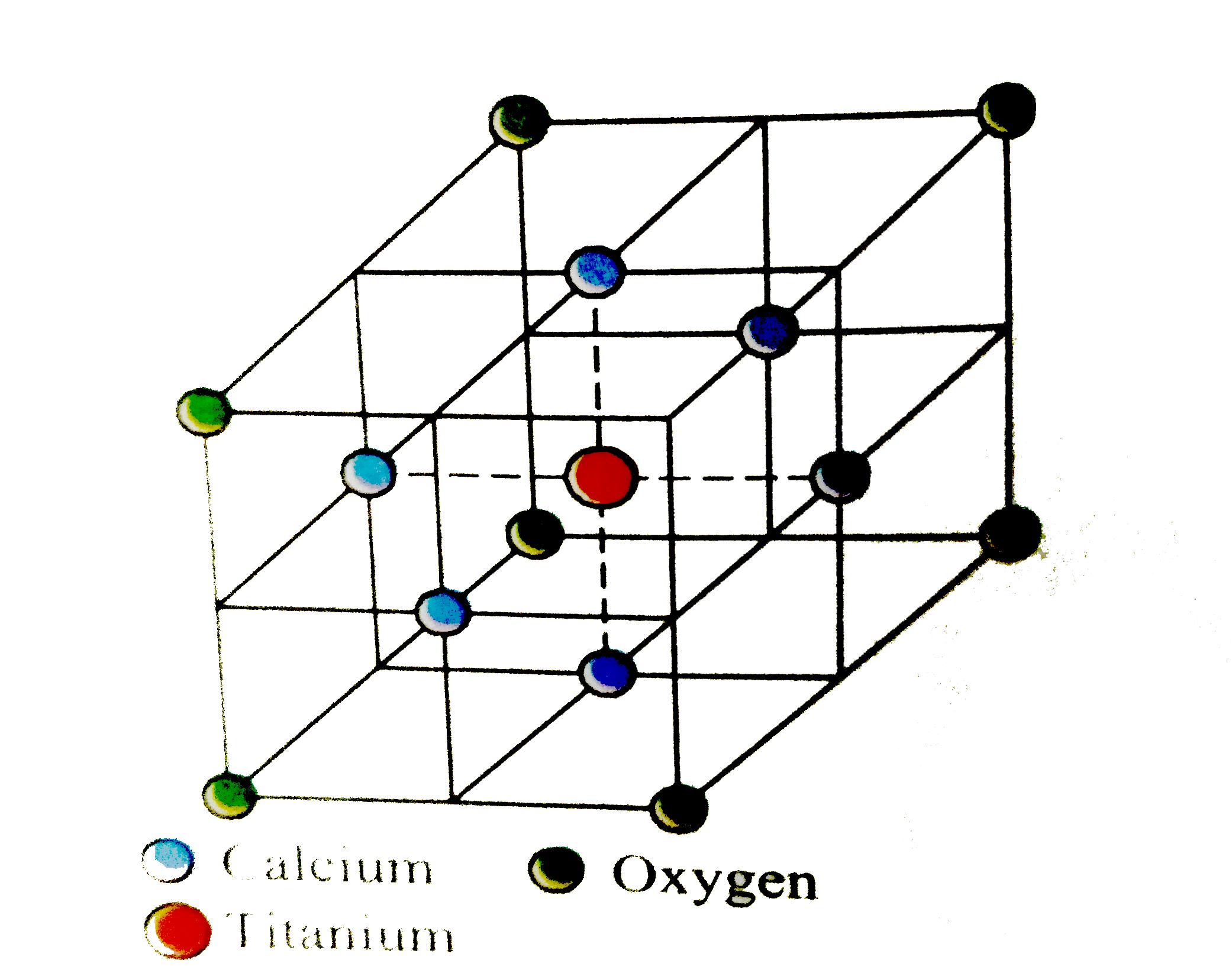A mineral containing calcium, oxygen and titanius crystallises in a given cubic unit cell. What is the formula of the mineral?
To determine the formula of the mineral containing calcium, oxygen, and titanium that crystallizes in a cubic unit cell, we can follow these steps:
Step 1: Identify the elements and their common oxidation states
- Calcium (Ca) typically has an oxidation state of +2.
- Oxygen (O) typically has an oxidation state of -2.
- Titanium (Ti) can have multiple oxidation states, but in many minerals, it is commonly found in the +4 oxidation state.
Step 2: Determine the ratio of the elements based on their oxidation states
- The oxidation states suggest that for every 1 calcium ion (Ca²⁺), we need 1 oxygen ion (O²⁻) to balance the charge.
- For titanium, if it is in the +4 state, we would need 2 oxygen ions to balance the charge from 1 titanium ion (Ti⁴⁺).
Step 3: Combine the elements to find the empirical formula
- From the above, we can see that:
- 1 Ca²⁺ contributes +2 charge.
- 1 Ti⁴⁺ contributes +4 charge.
- 2 O²⁻ contribute -4 charge.
- To balance the charges, we can combine these in the following way:
- 1 Ca²⁺ + 1 Ti⁴⁺ + 2 O²⁻
Step 4: Write the empirical formula
- The empirical formula based on the above combination is:
CaTiO3
Conclusion
The formula of the mineral containing calcium, oxygen, and titanium that crystallizes in a cubic unit cell is CaTiO₃.
---
- Calcium (Ca) typically has an oxidation state of +2.
- Oxygen (O) typically has an oxidation state of -2.
- Titanium (Ti) can have multiple oxidation states, but in many minerals, it is commonly found in the +4 oxidation state.
- The oxidation states suggest that for every 1 calcium ion (Ca²⁺), we need 1 oxygen ion (O²⁻) to balance the charge.
- For titanium, if it is in the +4 state, we would need 2 oxygen ions to balance the charge from 1 titanium ion (Ti⁴⁺).
- From the above, we can see that:
- 1 Ca²⁺ contributes +2 charge.
- 1 Ti⁴⁺ contributes +4 charge.
- 2 O²⁻ contribute -4 charge.
- 1 Ca²⁺ + 1 Ti⁴⁺ + 2 O²⁻
- The empirical formula based on the above combination is:
CaTiO3
The formula of the mineral containing calcium, oxygen, and titanium that crystallizes in a cubic unit cell is CaTiO₃.
Similar Questions
Perovaskite, a mineral containing calcium, oxygen & titanium crystallizes in the given unit cell

The oxidation number of titanium in the perovskite is
View SolutionWhat is a mineral?
View SolutionWhat is a mineral?
View SolutionWhat is a mineral?
View SolutionThe formula of mineral borax is:
View SolutionWhat is the role of minerals in animals?
View SolutionWhat is passive absorption of minerals?
View SolutionGold (atomic radius = 0.150nm) crystallises in a face centred unit cell. What is the length of the side of the cell ?
View SolutionA compound contains two types of atoms X and Y. it crystallises in a cubic lattice with atoms X at the corners of the unit cell and atoms Y at the body centre. The simplest possible formula of this compound is
View SolutionWhat is mineral water ?
View Solution
